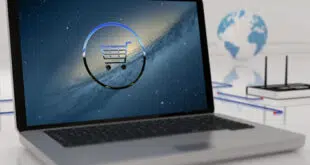For nine years, PayNearMe has focused on enabling consumers without access to payment cards to make cash payments for online goods at point-of-sale terminals in what has grown to a network of some 27,000 merchant locations. On Thursday, the Sunnyvale, Calif.-based company said it now can process credit, debit, and automated clearing house payments for those consumers as well.
The company, a unit of the fintech platform Handle Financial Inc., has signed about 20 billers for the expanded service so far, according to Mike Kaplan, senior vice president and general manager for PayNearMe’s merchant-processing business. Most of these billers are in the auto-finance business, including Capital Auto Financial and Grameen America.
Meanwhile, PayNearMe is working on adding more billers for the expanded payments service. “We have thousands of billers on the cash network, and not all are enabled for debit and credit,” Kaplan tells Digital Transactions News. “We are going back to enable [them].”

Meanwhile, the data is tokenized at PayNearMe and can be used again the next time the consumer clicks the link on his phone. “You don’t have to download [another] app,” says Kaplan. “We’re leveraging what they already have on their phone.”
The service isn’t necessarily free to either consumers or merchants. In some cases, billers may try to recoup card-acceptance costs with a fee to the consumer that typically ranges from $1.99 to $2.99 per transaction, Kaplan says. “Where there’s a convenience fee, it’s clear to the consumer, but wherever possible we try to convince the biller to absorb the cost of the transaction,” he adds. PayNearMe, however, adds its own fee, which Kaplan says is expressed as a percentage of the payment. “It definitely varies, we’re trying to be competitive,” he says, though he can’t discuss the fee more specifically.
One reason PayNearMe added more tender types after all these years is that it heard some dissatisfaction from its biller clients with the services it was using to collect non-cash payments. “What we’re finding is that there are plenty of options but they are frankly unhappy with a lot of the vendors out there,” says Kaplan.
But PayNearMe itself is likely to face some stiff competition in its original cash-payment market. The big London-based merchant-acquirer Paysafe Group in June introduced Paysafe Cash in 14 countries and said it would expand the service to 32 more markets by year’s end, including the United States. As with PayNearMe, users of Paysafe Cash download or print out a barcode they can take to a participating store to hand over cash for an online purchase.





